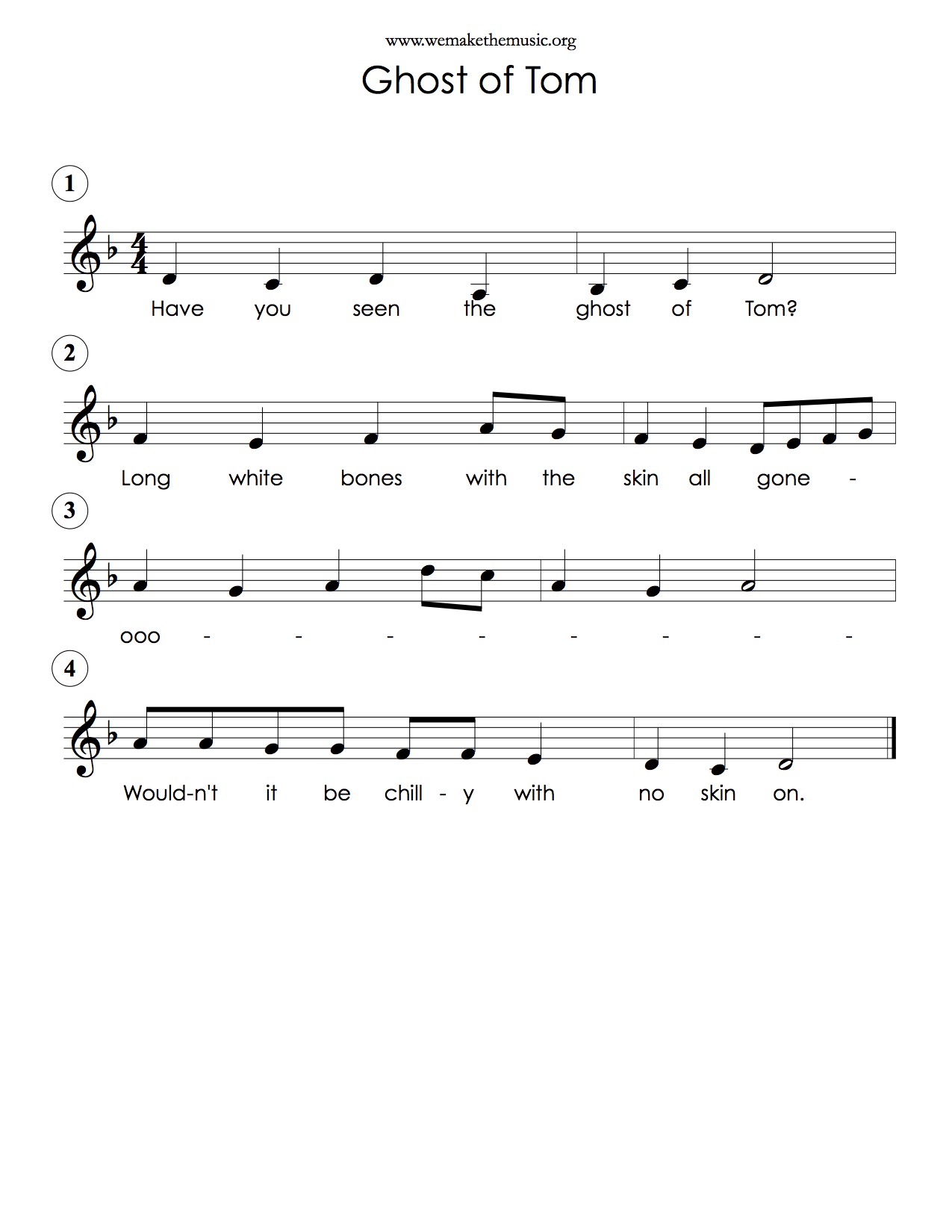Our weather has finally changed here in Southern California. Trees are beginning to change colors and mornings and evenings are cooling down. Neighborhoods have started putting out pumpkin decorations and those who plan ahead have already begun to gather candy.
Halloween is coming.
I shared in this post that I’m actually not a huge fan of Halloween. Many people love being scared. They love all things spooky, and are thrilled to dress up as witches, ghosts, and goblins. I happen to not be one of those people.
Our students are the same way. Some of them love spooky songs, others can take them a bit too seriously and it’s not a fun time for them. Some schools may even discourage teachers from singing scary songs.
So today I’m sharing songs that are perfect for Halloween - whether your students love to be spooked or they’re just in it for the candy.
1. Spooky Scary Halloween Songs
Witch, Witch
This song has its origins as a nursery rhyme.
The two note chant it easy for students to sing in tune, making it appropriate for younger grades. Alternatively, you can speak it as a rhyme like I have notated here.
Young students will also love the game that accompanies the song: the student as the “witch” stands in the middle of the circle. After the last line (“no, you old witch!), the students scatter and the witch must catch someone to take his / her place in the circle.
Recommended Grades: K - 2
Musical Uses:
- Singing assessment of the child in the middle
- Solidify steady beat in a compound duple meter
- Shouting versus singing voice
- AB Form
Miss White Had a Fright
This rhyme is pretty humorous, and fun to chant. Many teachers use it with younger grades because the rhythm is so straightforward. I’ve done a post about using it for rhythm vs. beat here.
However, creatively this rhyme is so playful it lends itself to older grades as well. Here are some ideas:
Recommended grades: 2nd - 3rd
Musical Uses
- Act it out in small groups
- Ask students to create an ostinato using sounds like "Eek! A ghost!" "yummy yummy" and "shhhhhhhhhhh" or whatever inspires you from this rhyme.
- Add an intro with wind chimes, a rain stick, or any other instruments students choose
- Add dynamics: ask students to decide which places should be quiet, and which should be loud.
- Perform: some students speak the rhyme, some act out the rhyme, some play instruments, some speak the ostinato.
Ghost of Tom
This song also goes by the name, Ghost of John. Like many folksongs, Ghost of Tom has a shared background between more than one place. Some sources say it has its roots in Kentucky, though some have traced it to Europe. Either way, it’s a great one to use this time of year.
Upper grades who are not as easily frightened may find humor in the last line. It also has a pretty extensive range, making it great for your older students.
Recommended Grades: 3rd - 5th
Musical Uses:
- Sing it in a round
- Range extension (the “oo” vowel is great for helping kids with their head voice)
- Singing in natural minor
2. Not So Spooky Songs
If you teach in a school that doesn’t celebrate Halloween, or you have students who are easily spooked, enjoy this collection.
Five Little Pumpkins
This rhyme is darling, and perfect for young students who enjoy counting songs. Much of the song can be dictated easily, allowing you to pull target phrases out for students to analyze. The exceptions are lines with an anacrusis to the next phrase, or lines with a rest.
Recommended Grades: K - 1st.
Musical Uses:
- Rhythm vs. Beat: students track the beat by pointing to strips of pumpkins
- Act it out
- Give each pumpkin an instrument representation to play while the class speaks the rhyme
- Dictate the last phrase using pumpkins placed over hearts
Who’s That?
While note technically a Halloween song, nor necessarily a fall song, I think Who’s That fits nicely into our theme. Students can recall going door to door collecting candy when you introduce this song.
To play the game, students march in a circle, with one student in the middle who has his / her eyes covered. Two others are stationed somewhere else in the classroom. One child outside the circle is assigned to sing “mammy”, the other to sing “daddy”. When the song ends the two outside students silently walk back to the circle so the child in the middle can guess whose voices he / she heard.
Recommended Grades: 2nd - 3rd
Musical Uses:
- Half note
- Do - sol
- Singing assessment
- Add a call and response intro: the teacher “knocks at the door” (claps hands) and students give her a contrasting answer.
Big Rock Candy Mountain
The length of this song alone makes it appropriate for older grades.
There are a few versions of this song. Some have a little more detail about the main character in this song (a traveling "hobo"). I chose this version because it was the one I grew up with, and the focus is on the candy - perfect for Halloween!
Recommended Grades: 3rd - 5th.
Musical uses:
- Ask students to think of types of candy, and then group them by names that have the same rhythm
- Create a contrasting B section of candy names, then put on body percussion and/or instruments.
- Make up a new verse
- Anacrusis
- Dotted quarter and eighth note
- Fa
Halloween is a really special time for our students.
These songs are perfect for meeting students where they are musically, while enjoying all the fun of Halloween!
Enjoy!








